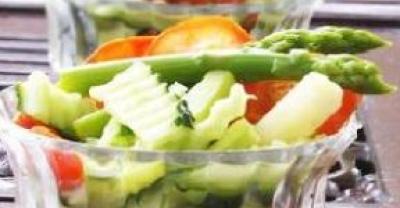What nutrients can you get from a mouthful of vegetables?
From the picture, we can see the calcium absorption rate. Although milk is claimed to contain much more calcium, unfortunately, its absorption rate is only 32%, because it does not take into account its phosphorus content, but also has its effect.
The green area below is all plant-based food, and its calcium content may not be as much as milk, but we can see that its absorption rate is higher than 50%, that is to say, the calcium absorption rate in plants is very easy for people to absorb, while animals are just the opposite. This is the left evidence of the science we see.
Let's compare the content of iron. Similarly, many people think that there may be a lot of iron in red meat, which is also a misunderstanding.
The iron content in dairy products is very low. We have seen this picture. If you want to get the same amount of iron, you can eat a bowl of spinach or consider drinking 2,000 liters of milk.
Dear friends, would you like to eat a bowl of spinach or drink two thousand liters of milk? They give you the same amount of iron. Of course, I think our friends who have participated in the course will probably choose to eat a bowl of spinach. Because we know that there may be a lot of ingredients in milk that are not suitable for us.
The next picture tells us that, measured in calories, kale with the same calories contains 14 times more iron than steak.
The two calories are the same. According to the analysis, cabbage contains 14 times more iron than steak, and vitamin C can promote iron absorption. Of course, cabbage is rich in vitamin C, which has an additive and multiplicative effect. But there is no such ingredient in meat.
Here we can see from this picture that you can get these nutrients from a mouthful of spinach. As you can see in this chart, you can see a huge amount of nutrition, including fat, protein, carbohydrates and cellulose that we are familiar with.
Don't forget that there are also trace amounts of these nutrients, including minerals, vitamins, fatty acids, etc., which may be no less helpful to our bodies than these huge amounts of nutrients. So how did you get it? You get it with a mouthful of spinach. If you eat a mouthful of spinach, you can get all the nutrients in this table.
And here shows that nutrition is the comprehensive performance of hundreds of components, it is a very complex structure, mutual influence, the overall utility multiplication, often more than the sum of the actions of a single component. This is definitely not the effect we can get by taking vitamins now. So we need complete nutrition, and we still have to get it from natural, unprocessed whole grains.
- Prev

What are the suitable vegetables to grow in November?
With the gradual development of urbanization, green vegetables polluted by 0 + 0 are more and more popular among users, because vegetables contain all kinds of cellulose, vitamins and minerals.
- Next

Vegetable and meat prices in Wuhan are expected to fall in March.
According to the Wuhan Municipal Development and Reform Commission, in February, the retail prices of staple and non-staple food in Wuhan farmers' market were compared with the previous month: grain and oil, vegetables, pork, beef, home.
Related
- Where is it suitable to grow horseradish in China? it is expected to see the middle altitude horseradish in Alishan.
- How to prevent tomato virus disease reasonably? (Control methods included)
- Many people like to plant towel gourd on the balcony. What are the main points of this method and management?
- What crops can chili peppers be mixed with?
- Fertilization techniques and matters needing attention in Tomato
- What are the grafting techniques for peach seedlings in spring?
- Harm and control methods of root swelling disease of Chinese cabbage
- What are the pests of sweet potatoes? How to prevent and cure it?
- Symptoms, causes and Control methods of navel Rot in Tomato
- The cause of "Cucumber rotten bibcock" in Farmers' planting Cucumber and its Control Plan

